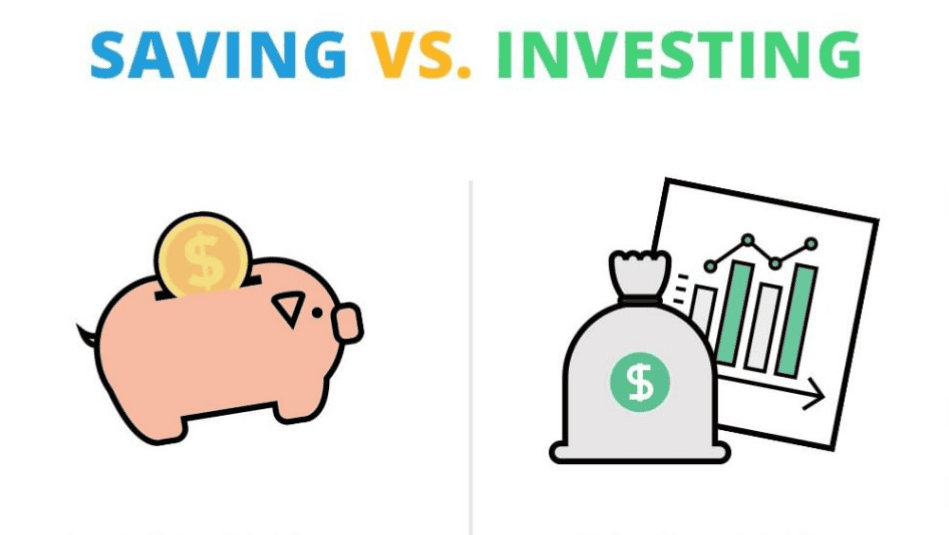Savings Account vs. Investments – Which One Is Better?

When it comes to managing your money, one of the biggest decisions is whether to keep it safe in a savings account or put it to work through investments. Both have unique advantages and disadvantages, and the right choice depends on your financial goals, risk tolerance, and time horizon. In this detailed guide, we’ll compare savings accounts and investments so you can make a confident decision about your financial future.
Why This Decision Matters
Choosing between a savings account and investments is not just about numbers—it’s about how you want your money to work for you. Savings accounts prioritize safety and liquidity, while investments aim for growth and long-term wealth building. Understanding the trade-offs between the two options can help you strike a balance that supports both your short-term needs and long-term goals.
Key Differences Between Savings Accounts and Investments
| Factor | Savings Account | Investments |
|---|---|---|
| Risk Level | Very low – deposits are typically insured by government programs. | Varies – can range from low (bonds, CDs) to high (stocks, crypto). |
| Potential Returns | Low – usually between 0.5% and 4% annually depending on bank rates. | Higher – historically, stock markets average 7–10% annually over the long term. |
| Liquidity | High – funds are easily accessible at any time. | Medium to low – depends on the type of investment and market conditions. |
| Best For | Emergency funds, short-term goals, or safe storage of cash. | Long-term wealth growth, retirement, and building assets. |
| Inflation Protection | Poor – savings often lose value over time due to inflation. | Better – many investments outpace inflation in the long run. |
| Accessibility | Immediate – withdraw anytime through ATM or bank transfer. | Dependent – selling stocks, funds, or bonds can take days. |
When a Savings Account Makes Sense
Savings accounts are not meant to make you rich, but they serve an important role in financial planning. Here’s when they are the better choice:
- Building an emergency fund: You need quick access to cash in case of medical bills, job loss, or unexpected expenses.
- Short-term savings goals: Saving for a vacation, car, or down payment within the next 1–3 years.
- Risk aversion: If market volatility makes you uncomfortable, savings accounts provide peace of mind.
- Guaranteed safety: With government insurance, your money is secure even if the bank fails.
When Investments Make Sense
Investments can feel risky, but they are often the best path to financial growth. You should consider investments if:
- You have a long-term horizon: Money you don’t need for at least 5–10 years can grow significantly in the market.
- You want to beat inflation: Savings rates often fail to keep up with inflation, while investments provide better protection.
- You’re focused on wealth building: Whether for retirement or passive income, investments help grow your assets.
- You can handle some risk: While investments can fluctuate, disciplined investors usually see growth over time.
Pros and Cons of Savings Accounts
Pros:
- Safe and secure
- Immediate access to funds
- No risk of losing your principal
- Good for short-term financial needs
Cons:
- Low returns
- Does not keep pace with inflation
- May have withdrawal limits
Pros and Cons of Investments
Pros:
- Higher potential returns
- Better protection against inflation
- Variety of options from low to high risk
- Opportunity to build long-term wealth
Cons:
- Risk of loss during downturns
- Less liquid than savings accounts
- Requires more knowledge and discipline
How to Balance Savings and Investments
The best financial strategy usually involves using both savings accounts and investments, depending on your situation. Here’s a simple framework:
- Start with savings: Build a 3–6 month emergency fund in a high-yield savings account.
- Then invest: Once your safety net is secure, allocate funds to investments for long-term growth.
- Diversify: Don’t put all your money into one type of investment. Balance between stocks, bonds, and funds.
- Review annually: Adjust based on life changes, goals, or market conditions.
Frequently Asked Questions (FAQ)
Is a savings account ever better than investing?
Yes, when you need liquidity, security, or short-term access to money, savings accounts are the better choice.
What’s the biggest risk of investing?
The value of your investment can fluctuate, and you could lose money in the short term. However, long-term investing usually smooths out these risks.
Can I do both?
Absolutely. In fact, combining both is often the best strategy. Savings accounts for short-term safety, investments for long-term growth.
How much should I keep in savings vs. investments?
A common rule is to keep 3–6 months of expenses in savings, and invest any funds beyond that.
Conclusion: Which Is Better?
The answer depends on your financial goals. If your priority is safety and short-term access to money, a savings account is better. If your focus is long-term growth and building wealth, investments are the smarter choice. Most people benefit from using both together, with savings as a safety net and investments as a growth engine. The key is understanding your needs and balancing accordingly.